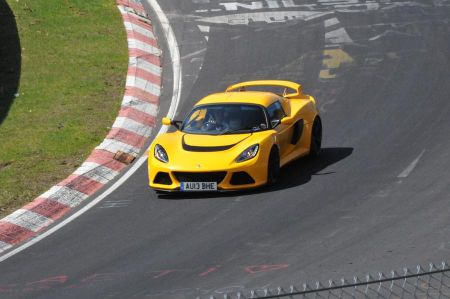Erlkönige on the Nordschleife of the Nürburgring
- Written by Portal Editor
Coming from Dernau, we had passed the Ahr Valley, then entered the lively little Eifel town of Adenau, which is worth seeing and continued on Trierer Straße to the parking lot next to the bridge right at the entrance to the Nordschleife.
How often in the past have we bought our tickets to drive on the Nordschleife here, done many laps on the street-legal Ducati and now and then with the Alfa Romeo or the Renault Turbo; Immediately, a variety of experiences on and around the racetrack were my head again.
Formula 1 driver Sir John "Jackie" Stewart
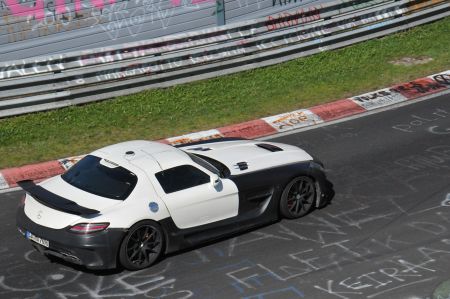 Today, too, there was a lot of activity on the world-famous and notorious Nordschleife of the Nürburgring. Ever since the route was defined and subsequently built in the years 1925 to 1927, the Nordschleife has had a reputation among all racing enthusiasts as a formidable and ruthless race track across the Eifel. The three-time world champion and Formula 1 driver Sir John "Jackie" Stewart, who was so enthusiastic about the route, is considered to be the inventor of the term "Green Hell", a name that all too clearly refers to the rapid succession of light changes during the tour indicates. Today's most famous race on this historic track is the ADAC Zurich 24-hour race, which is held over three days with a huge supporting program on a combination of the Grand Prix track and the old Nordschleife. Participation numbers of 800 drivers with more than 200 vehicles are absolutely obligatory.
Today, too, there was a lot of activity on the world-famous and notorious Nordschleife of the Nürburgring. Ever since the route was defined and subsequently built in the years 1925 to 1927, the Nordschleife has had a reputation among all racing enthusiasts as a formidable and ruthless race track across the Eifel. The three-time world champion and Formula 1 driver Sir John "Jackie" Stewart, who was so enthusiastic about the route, is considered to be the inventor of the term "Green Hell", a name that all too clearly refers to the rapid succession of light changes during the tour indicates. Today's most famous race on this historic track is the ADAC Zurich 24-hour race, which is held over three days with a huge supporting program on a combination of the Grand Prix track and the old Nordschleife. Participation numbers of 800 drivers with more than 200 vehicles are absolutely obligatory.
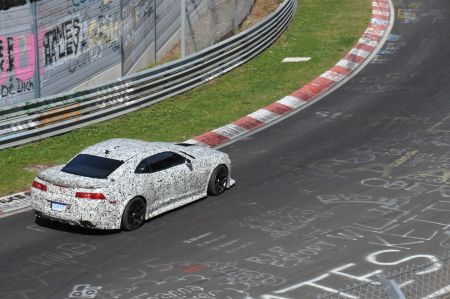 After parking the car, it goes straight up the few steps to the track, where a constant change of audience has gathered along the path at the barrier fence. There is no racing on the track, but there are several hundred spectators present. A little later we are in conversation with a spectator who draws our attention to some "camouflaged" vehicles that have mixed in with the otherwise colorful variety of models. We quickly started talking shop where the term "Erlkönig" actually comes from, which is so often used today for these camouflaged vehicles as the common designation for the prototypes. Out of sheer self-interest, many vehicle manufacturers try to keep the exact appearance of their latest models as secret as possible until they are presented. Some, not only German automobile companies go so far that there is a complete driving ban for prototypes in public. Others see it a little more relaxed and still present their Erlkönigs to the public in advance for testing purposes. And as is to be expected, there are people among the journalists who have specialized in the hunt for "Erlkönigen". They try to get as detailed photos of these vehicles as possible in order to then sell them to the trade press for a profit.
After parking the car, it goes straight up the few steps to the track, where a constant change of audience has gathered along the path at the barrier fence. There is no racing on the track, but there are several hundred spectators present. A little later we are in conversation with a spectator who draws our attention to some "camouflaged" vehicles that have mixed in with the otherwise colorful variety of models. We quickly started talking shop where the term "Erlkönig" actually comes from, which is so often used today for these camouflaged vehicles as the common designation for the prototypes. Out of sheer self-interest, many vehicle manufacturers try to keep the exact appearance of their latest models as secret as possible until they are presented. Some, not only German automobile companies go so far that there is a complete driving ban for prototypes in public. Others see it a little more relaxed and still present their Erlkönigs to the public in advance for testing purposes. And as is to be expected, there are people among the journalists who have specialized in the hunt for "Erlkönigen". They try to get as detailed photos of these vehicles as possible in order to then sell them to the trade press for a profit.
Talking shop where the term "Erlkönig" actually comes from
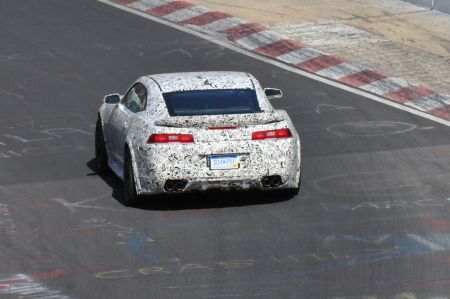 The term "Erlkönig" appeared for the first time in the 1950s, when the two motoring journalists Heinz-Ulrich Wieselmann and Werner Oswald reported on new vehicle models that could be seen camouflaged on the test tracks and documented with very simple "image material". Appropriately, they used the famous ballad "Erlkönig" by Johann Wolfgang von Goethe "Who rides so late through night and wind". It is the father with his child" to describe these models:
The term "Erlkönig" appeared for the first time in the 1950s, when the two motoring journalists Heinz-Ulrich Wieselmann and Werner Oswald reported on new vehicle models that could be seen camouflaged on the test tracks and documented with very simple "image material". Appropriately, they used the famous ballad "Erlkönig" by Johann Wolfgang von Goethe "Who rides so late through night and wind". It is the father with his child" to describe these models:
“These little pictures, which are ridiculously harmless by today's standards, were considered an unprecedented provocation by the automotive industry. That's why we had been thinking for weeks, maybe even months, whether and in what form we could allow ourselves to print these amateur photos".
"Erlkönig" by Johann Wolfgang von Goethe
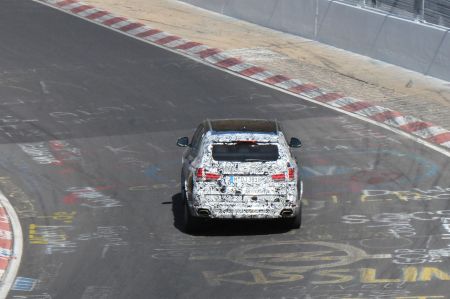 That's how the idea came about to accompany pictures with small, rhyming verses, so that the automotive industry didn't deal quite so harshly with this provocation by the media. This was the official birth of the term "Erlkönig" for the prototypes, regardless of their origin. The first Erlkönig was the then eagerly awaited prototype of the Mercedes Benz 180, whose caption read as follows:
That's how the idea came about to accompany pictures with small, rhyming verses, so that the automotive industry didn't deal quite so harshly with this provocation by the media. This was the official birth of the term "Erlkönig" for the prototypes, regardless of their origin. The first Erlkönig was the then eagerly awaited prototype of the Mercedes Benz 180, whose caption read as follows:
Elf king
Who is driving so fast through rain and wind?
Is it a road cruiser from over there
who only lagged behind in scope
or even Daimler's youngest child?
The silent observer would not be at all surprised
when that radically new model
that too fast even for the photographer,
would be nothing but the son of "Three Hundred."
Prototype of the Mercedes Benz 180
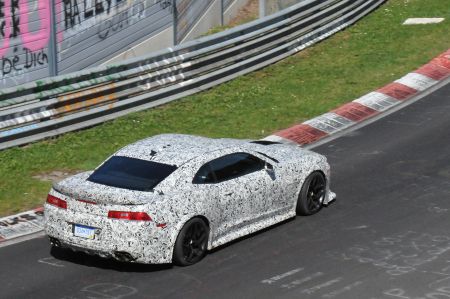 In the automotive industry, the new and further development of vehicle types is a very important sales criterion, because who wants to be surrounded by an old-fashioned design. It is of course very important to keep up the sales figures of the previous model until the new model is launched. This, in turn, is only possible if there is little public knowledge of changes in technology and design. Of course, the new model must also be extensively tested and tried out in everyday use. And this is exactly where the race for the prototypes begins, which today requires extensive knowledge from the relevant journalists, who sometimes have to visit remote test tracks to get their photos. A constant struggle between the secrecy policy of the corporations and public publication by the media.
In the automotive industry, the new and further development of vehicle types is a very important sales criterion, because who wants to be surrounded by an old-fashioned design. It is of course very important to keep up the sales figures of the previous model until the new model is launched. This, in turn, is only possible if there is little public knowledge of changes in technology and design. Of course, the new model must also be extensively tested and tried out in everyday use. And this is exactly where the race for the prototypes begins, which today requires extensive knowledge from the relevant journalists, who sometimes have to visit remote test tracks to get their photos. A constant struggle between the secrecy policy of the corporations and public publication by the media.
A constant battle between secrecy policies
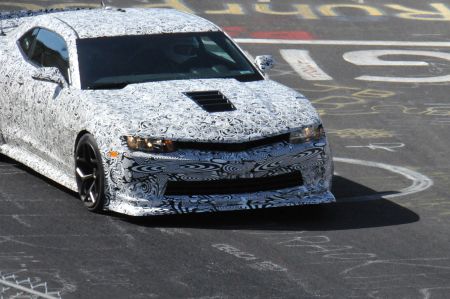 Many vehicle manufacturers change the visual appearance of their vehicles accordingly when they have to go public for testing purposes. This often happens in such a way that a new model is given an old, albeit adapted body of the previous model. Sometimes you simply use the body of another model from the same company. These "Erlkönige" are also referred to as "Muletto" because there is a mixture of new technology and foreign shell. If the new design has already been finalized and you have to go public for testing purposes, the car is disguised. Sometimes you hide distinctive contours, sometimes you change the fenders and hoods so that they are far removed from the look of the new model. Sometimes it is only parts that are covered on the body to disguise the actual appearance. Of course, such panels are also available for the interior.
Many vehicle manufacturers change the visual appearance of their vehicles accordingly when they have to go public for testing purposes. This often happens in such a way that a new model is given an old, albeit adapted body of the previous model. Sometimes you simply use the body of another model from the same company. These "Erlkönige" are also referred to as "Muletto" because there is a mixture of new technology and foreign shell. If the new design has already been finalized and you have to go public for testing purposes, the car is disguised. Sometimes you hide distinctive contours, sometimes you change the fenders and hoods so that they are far removed from the look of the new model. Sometimes it is only parts that are covered on the body to disguise the actual appearance. Of course, such panels are also available for the interior.
For public testing purposes, the car is disguised
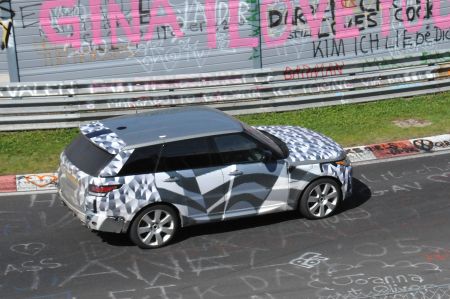 It was interesting to observe how differently engineers and designers proceeded here with today's test cars, sometimes it was not possible to see which vehicle of a brand it could be, the camouflage was so good.
It was interesting to observe how differently engineers and designers proceeded here with today's test cars, sometimes it was not possible to see which vehicle of a brand it could be, the camouflage was so good.
Then again, only parts were masked, so that you probably only wanted to test attachment kits. Whatever the case, it was another interesting short trip to the Nordschleife, which brought some new insights and new acquaintances. Even if you're not a motorsport fan, Adenau and the Nordschleife of the Nürburgring are always worthwhile travel destinations.
A worthwhile travel destination is Adenau and the Nordschleife of the Nürburgring
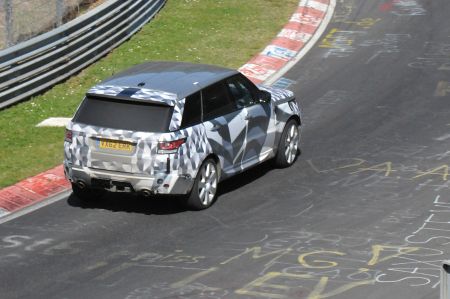 It's a good thing that it has so far been possible to drive the Nordschleife as a private individual. On the days of freely accessible use, however, you will also find motorcycles on the route in addition to cars, so that absolute attention is always required. If you prefer to take care of your own vehicle, you also have the option of renting a rental vehicle in racing trim. Depending on the level of prior knowledge and confidence, only slightly modified, roadworthy vehicles up to real racing vehicles are available here. If this doesn't seem quite right to you, you can take the so-called "Ring Taxi" to "drive" around the Nordschleife. Of course, you don't have your own driving experience, but experienced pilots who drive the ring taxi provide the necessary adrenaline.
It's a good thing that it has so far been possible to drive the Nordschleife as a private individual. On the days of freely accessible use, however, you will also find motorcycles on the route in addition to cars, so that absolute attention is always required. If you prefer to take care of your own vehicle, you also have the option of renting a rental vehicle in racing trim. Depending on the level of prior knowledge and confidence, only slightly modified, roadworthy vehicles up to real racing vehicles are available here. If this doesn't seem quite right to you, you can take the so-called "Ring Taxi" to "drive" around the Nordschleife. Of course, you don't have your own driving experience, but experienced pilots who drive the ring taxi provide the necessary adrenaline.
Please read as well:
Istanbul Circuit: Superbiker Marco Melandri knows the course
